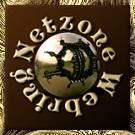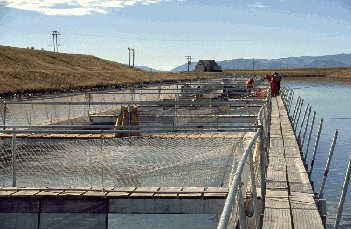![]()
Coasts
Rivers/Lakes
Lowlands/Plains
Geysers/Mud
Glaciers
Mt. Ruapehu
Mt. Cook
White Island
A Maori Legend
![]()
Abbotsford
Aramoana
Ballantynes
Brynderwyns
Cave Creek
Hawkes Bay
H.M.S. Orpheus
Influenza
Mt. Erebus
Mt. Tarawera
Rainbow Warrior
Seacliff Hospital
Tangiwai
Wahine
![]()
Annie Aves
Ata-hoe
Daisy Basham
Jean Batten
Minnie Dean
Mabel Howard
Margaret Mahy
Kath Mansfield
Kate Sheppard
Kiri Te Kanawa
Catherine Tizard
Murray Ball
Charles Goldie
Edmund Hillary
Richard Pearse
Lord Rutherford
Charles Upham
![]()
NZ FAQ--Funny
NZ Links
Credits
Most New Zealand rivers are fast-flowing due to the mountainous nature of much of the country. Many are considered totally unnavigable but these have become invaluable for the generation of electricity. Hydro-electric plants using dams are common and provide the majority of the country's power. Our first major power plant was based on hydro-electric power and was built near Reefton way back in 1888. The first city to be lit by hydro-electric power -- with a dam and dynamo provided by a public company -- Reefton was powered only six years after electricity became commercially viable in the United States. At this time companies in New Zealand were still relying on steam. A state-owned hydro-electric power station opened on the Raikaia River in 1914 which initially generated 3.5 mW of power. By the early 1920's demand far exceeded supply and additional machines were installed, the final one of these being in 1930. With new power stations throughout the country hydro-electric output climbed to 135,590 kW.
Lake Manapouri is regarded as one of New Zealand's most scenic lakes and this is also the site of our largest hydro-electric power station. At 443 metres it is the deepest lake in the country and during the planning of the power station huge public objections were lodged when it became known that the level of the lake would be artificially raised by 12 metres. Concerns came from the potential destruction of the shoreline, and after one of the largest petitions ever presented to New Zealand parliament was tabled, the plan was modified to leave the lake at its natural level. On the upside, the enormous fuss from this event provided some excellent publicity as to the attractions to be found around this area of Fiordland. Maori legend says this lake was formed from the tears of two daughters of a local chief and the English translation is 'Lake of the Sorrowing Heart' or 'Lake of the Throbbing Heart'. Lake Manapouri is not the original name. Over the years it has also been called Roto-ua ('Rainy Lake') and Moturau ('Hundred Islands'). The present name came by mistake after an early surveyor confused Manapouri with another New Zealand lake and mislabelled it. The name stuck. New Zealand's largest lake is Taupo which is in the central North Island. This particular lake occupies a series of volcanic depressions and has an interesting history. It was created in 135 A.D. by the world's largest volcanic eruption for the past 5,000 years. Scientists put the the magnitude of this eruption at one hundred times larger than Mt. St. Helen's. Studies show an estimated thirty-three billion tons of pumice was ejected and this would probably have killed all vegetation within the North Island. Prior to that another eruption occurred which is considered to be the world's second-largest volcanic eruption within that time span.
There are no written recordings of events during this time as it occurred prior to human habitation of New Zealand. The closest people to witness events would have been the native Aborigines of Australia. This culture had no written language but used story and song to pass down information through generations. It is known that the sun in China went hazy with brilliant red sunsets for 6 months, they also heard the bang. The Romans, too recorded the changed sunsets. An eruption of this size today would decimate a large portion of the North Island. As a volcano Taupo is only sleeping. On average an eruption is expected every 2,000 years and each rise in lake temperatures is carefully monitored though, at this stage, there has been no evidence another eruption is likely. Salmon and trout are popular game fish found in New Zealand rivers and lakes. These fish were introduced and trout are now widely established though salmon has never had quite the same success. Four species of trout can be found in New Zealand and of these, two, the rainbow and the brown trout, grow to impressive sizes. Specimens of rainbow trout at 2 to 3 kgs are common and fish as large as 9.5 kgs have been caught around Lake Taupo. The brown trout is commonly found at 5 kgs and has been caught at 17 kgs. So popular is this sport that in lakes where the fish do not spawn naturally regular restocking programmes are in action. Lake Taupo's California rainbow trout are probably the only pure strain left in the world and each year fingerlings and ova are sent from Taupo hatcheries to many parts of the world -- including back to California, from which the original batch came. Another popular
fish is the tiny whitebait which can be netted when running near
the mouths of rivers. The best whitebait rivers are on the West
Coast of the South Island and over 90% of the total annual catch
are caught here. Estimates put the catch at around 140 tonnes but
at present this is declining each year. Many of these tiny fish
end up in rather yummy fritters.
|



